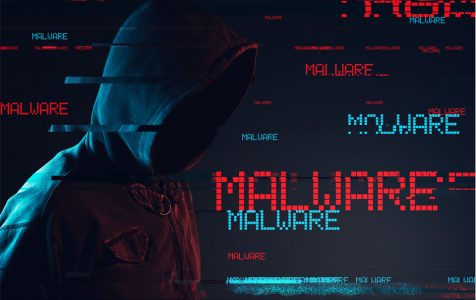Rthdcpl.exe stands for Realtek High Definition Audio Control Panel executable file. It is a software component of Realtek High Definition Audio Driver made and distributed by Realtek.
The Realtek HD Audio Driver is the bridge connecting Windows OS and the Realtek HD Audio Card. For the application to run, it needs the rthdcpl.exe executable to run the Realtek HD Audio Control Panel. In most cases, it comes with the Realtek sound card, and users don’t have to download the application separately.
Rthdcpl.exe File Information
Here is the file information of rthdcpl.exe:
- Developer: Realtek Corporation
- Programs: Realtek High Definition Audio Driver
- Executable File/Process: rthdcpl.exe
- Operating System: Windows (Version 10/8/7/XP)
- File Type: Windows System process (not essential)
- Folder Location: C:\Windows\System32 folder or a subfolder of C:\ or in a subfolder of “C:\Program Files” or c:\winnt directory.
- Known File Size: Average file size is 13,179,660 bytes
Note:
Expert Tip: For smoother PC performance, consider using a PC optimization tool. It handles junk files, incorrect settings, and harmful apps. Make sure it's right for your system, and always check the EULA and Privacy Policy.
Special offer. About Outbyte, uninstall instructions, EULA, Privacy Policy.
The rthdcpl.exe program has an icon on the Taskbar, usually next to the clock.
Is Rthdcpl.exe a Legitimate File?
The genuine rthdcpl.exe is a legitimate file linked with a Realtek audio driver. However, it may also be classified as a malware entity. Cybercriminals can develop malware and disguise it as a rthdcpl.exe executable file.
Is Rthdcpl.exe a Virus?
The rthdcpl.exe executable file, a software component of the Realtek sound card drivers, is legitimate and not a virus, spyware, or Trojan.
Like other executable files, the rthdcpl.exe file is vulnerable to threats. Executables can sometimes harm your computer, or a virus can easily corrupt them. Some malware developers intentionally create malware files with the same name as rthdcpl.exe to camouflage it and evade detection during installation.
If you notice any problem associated with rthdcpl.exe. You need to scrutinize it and find out if it is malware. To do this, check the:
- The file location: If it is located outside C:\Windows\System32 folder or a subfolder of C:\ or c:\winnt directory, treat it as malware.
- File size: If its size runs into a GB, treat it as malware.
- CPU and RAM usage: If it shows a high CPU usage of over 5% and RAM usage of more than 2 MB, treat it as malware.
Should Rthdcpl.exe Be Removed?
Removing a legitimate rthdcpl.exe file can affect the function of your PC’s Realtek sound drivers and the sound card. But you can remove rthdcpl.exe if necessary. For instance, if it is causing problems on your PC, or identified as a virus or malware.
How to Remove Rthdcpl.exe
To remove rthdcpl.exe virus, we strongly recommend the following:
1. Use a quality anti-malware tool to scan your computer.
Some malware or viruses use secure algorithms to evade detection. You should select equally strong, professional anti-malware to scan your PC system. The anti-malware tool will recognize a fake rthdcpl.exe or any malware present in the PC and remove it.
2. Run System File Checker (SFC)
Being an executable, the rthdcpl.exe virus or other malware with executable files can impersonate genuine PC applications and hide in the PC without detection. It can damage your PC’s Windows system files. You can examine your PC’s windows files by running the SFC utility to detect malware and fix errors and damaged files.
- Press Win + Q.
- Type cmd followed by Ctrl+Shift+Enter to run command prompt as Admin.
- In the command prompt, type sfc/scannow and press Enter.
The SFC will identify and fix errors and damaged files. Be patient because the process may take a few minutes. It then generates a report.
3. Uninstall the Rthdcpl.exe application
You can remove the rthdcpl.exe malware through the Programs and Features.
- Press Win+X.
- Click on Programs and Features (the first item on the list).
- Locate rthdcpl.exe on the list of apps (check for any other recently installed or suspicious file name).
- Right-click on the app and select Uninstall.
Restart your PC for the changes to take effect.
4. Clean your PC’s hard drive using Disk Cleanup (cleanmgr)
Disk cleanup will remove temporary files, including camouflaging malware that avoid detection. It will also clean your hard drive.
- Press Win + R.
- Type cleanmgr then press Enter.
- Click Okay to open Disk C (to be cleaned).
- On the new Windows, Click OK to open system files.
- Check the boxes of the files you no longer want on the PC.
- Click Okay then click Delete file and let the system run.
Restart your computer for the changes to take effect.
Final Thoughts
Each security and cleaning program has its own unique method and efficacy in detecting malware, and their performance may vary when dealing with different types of threats like a potentially harmful rthdcpl.exe file. It’s recommended to ensure your chosen security software is updated regularly for maximum protection.
